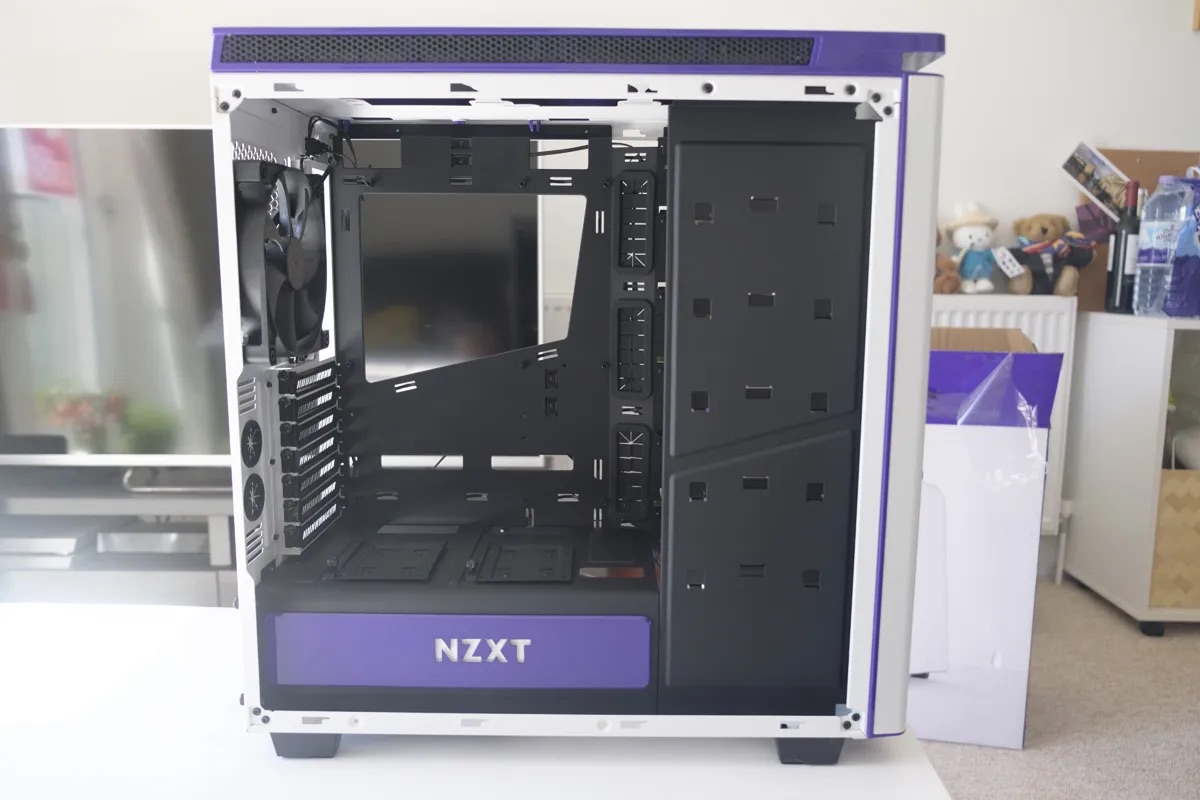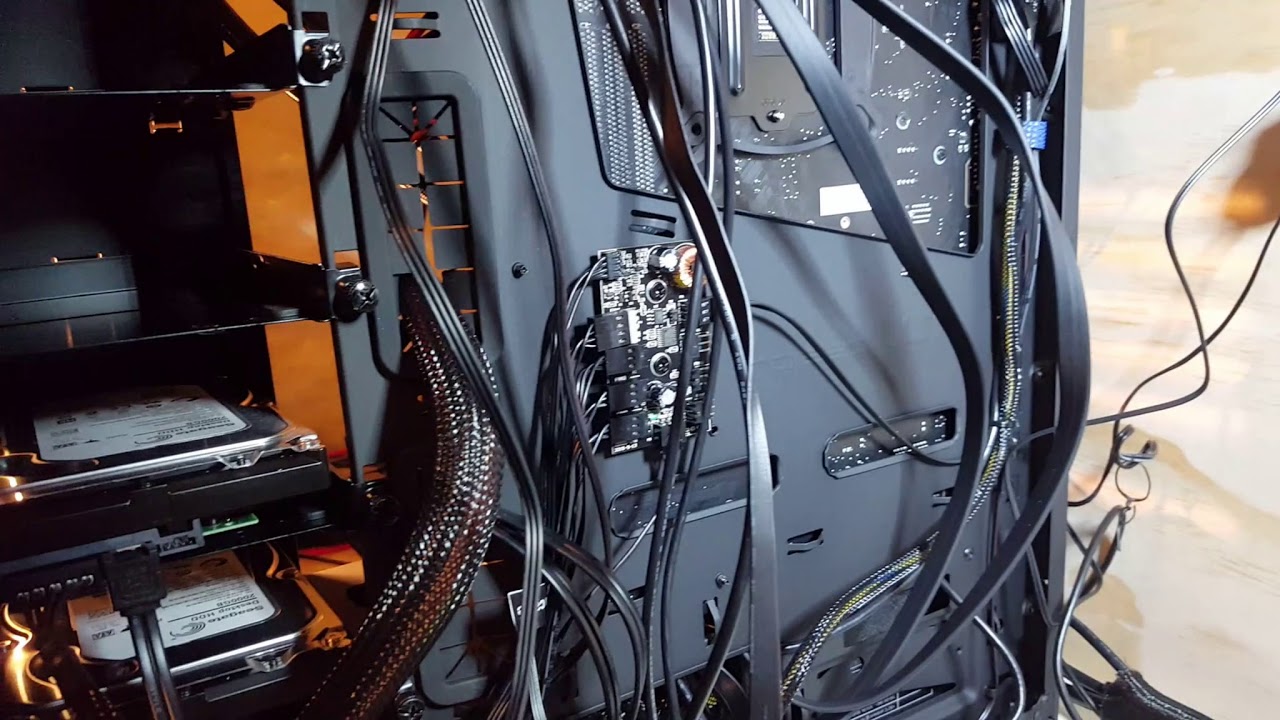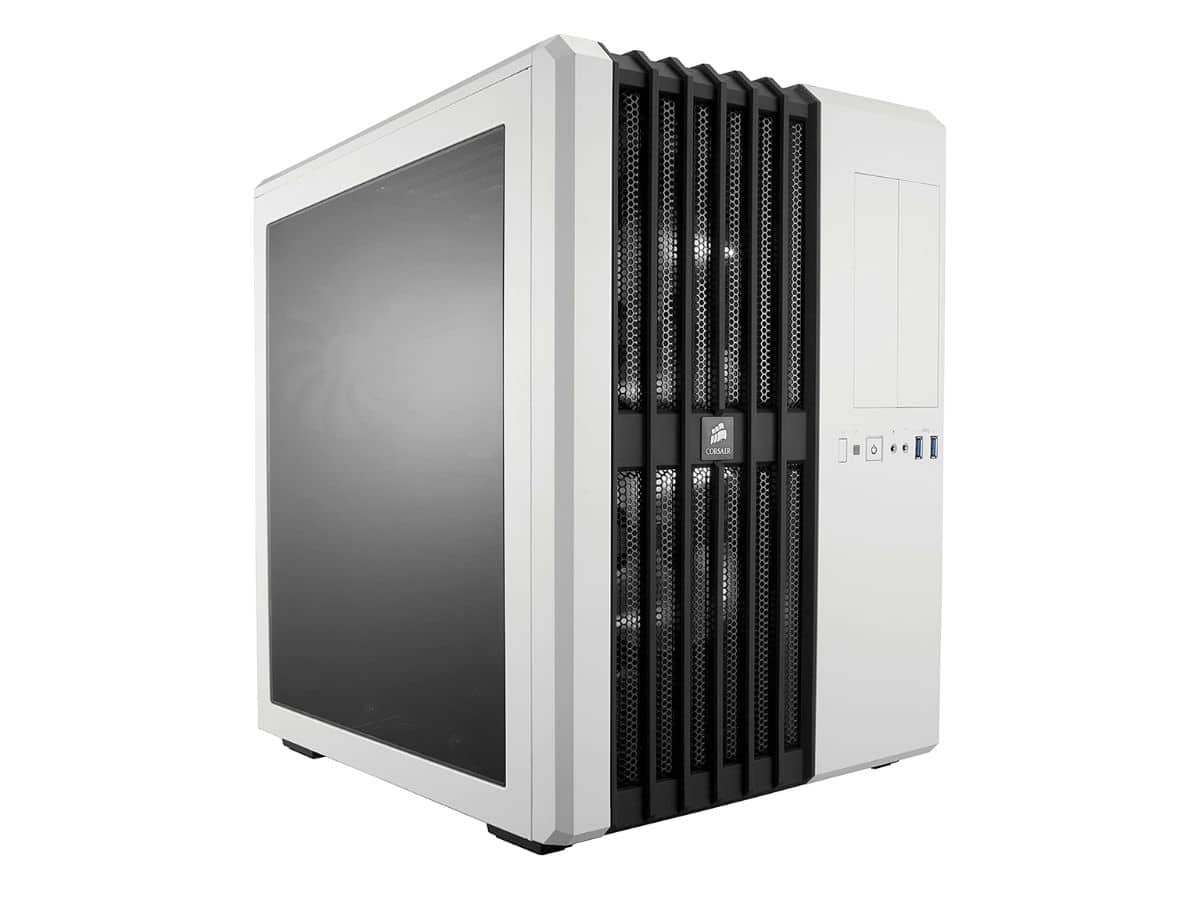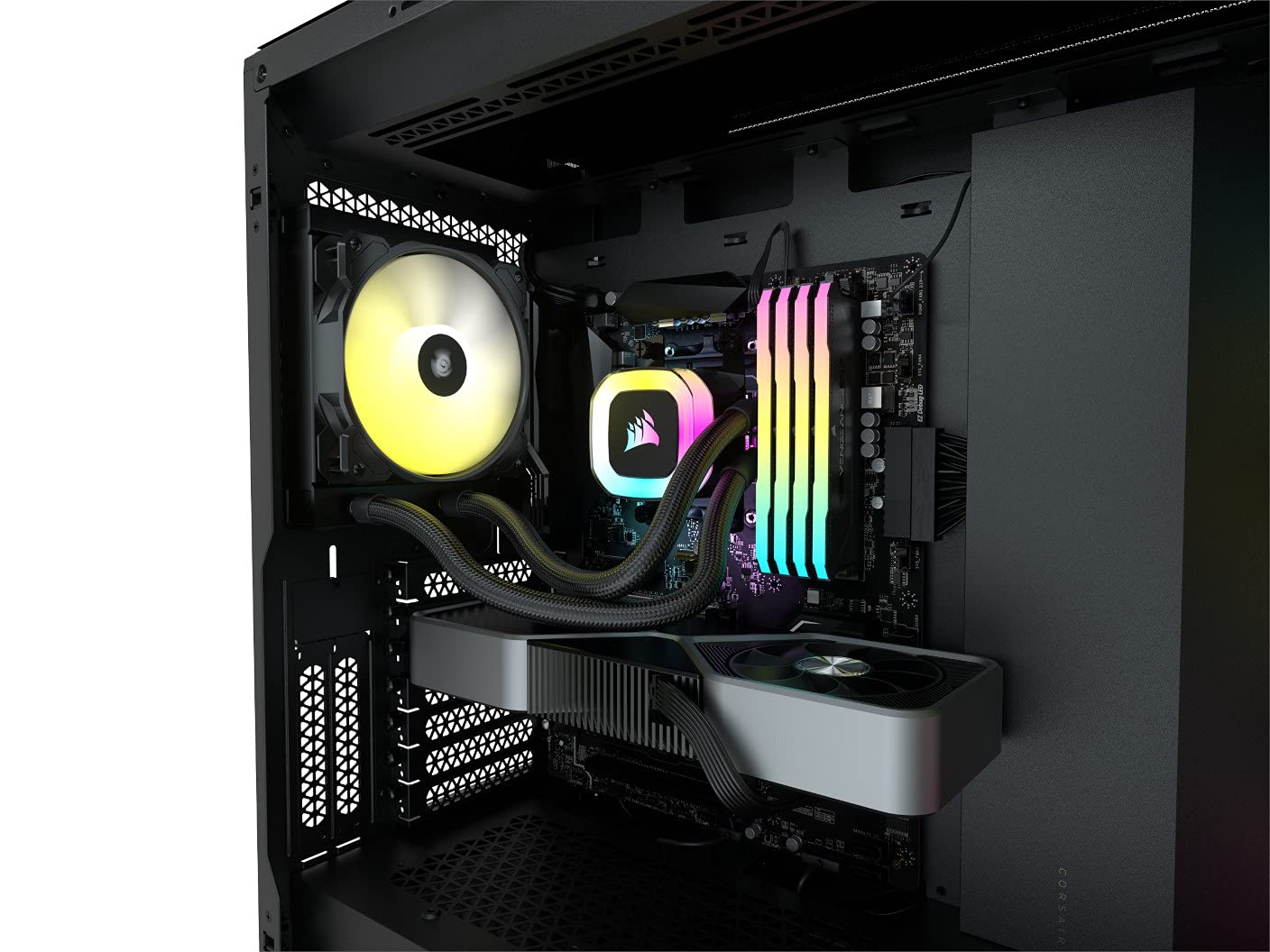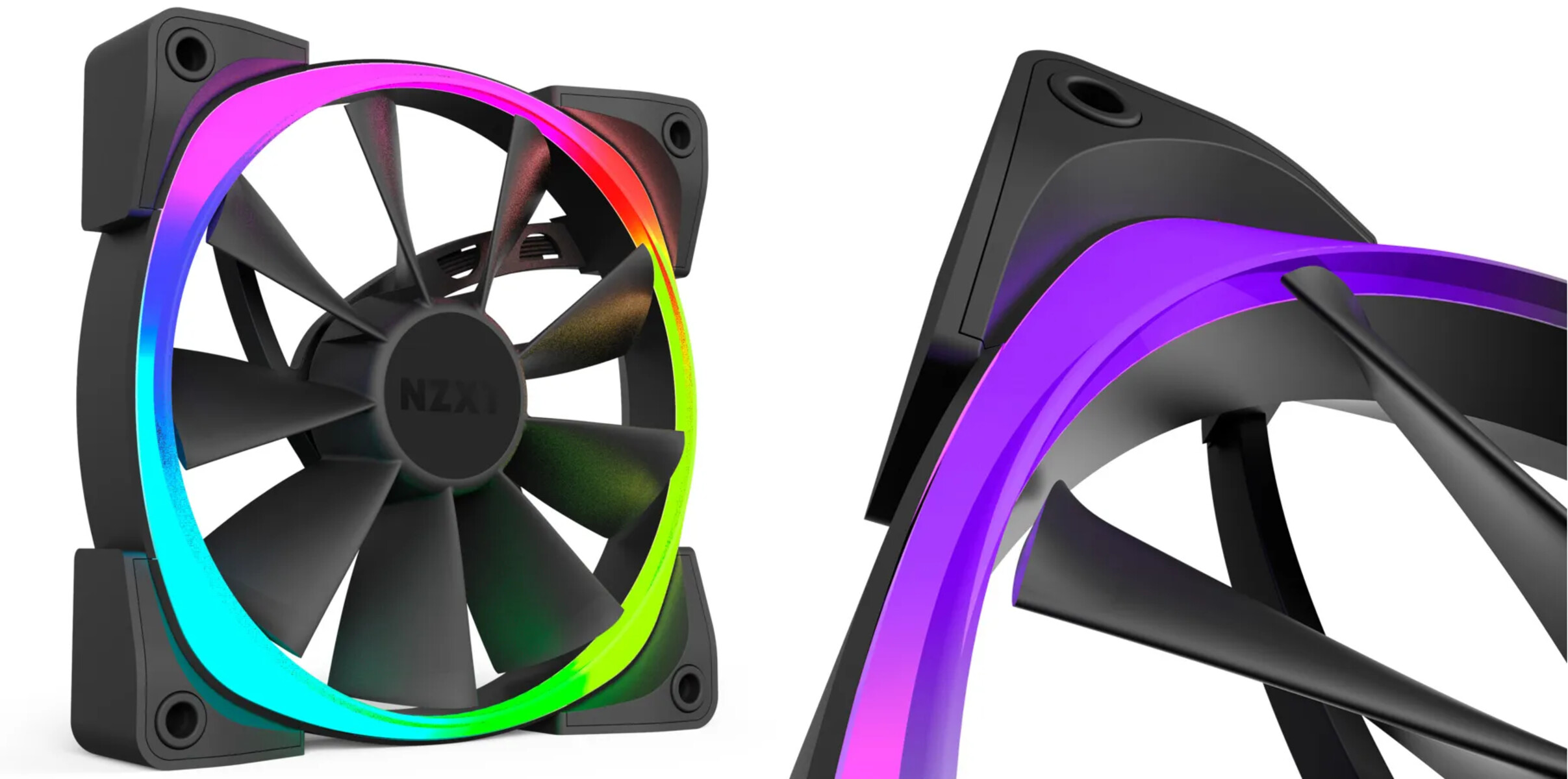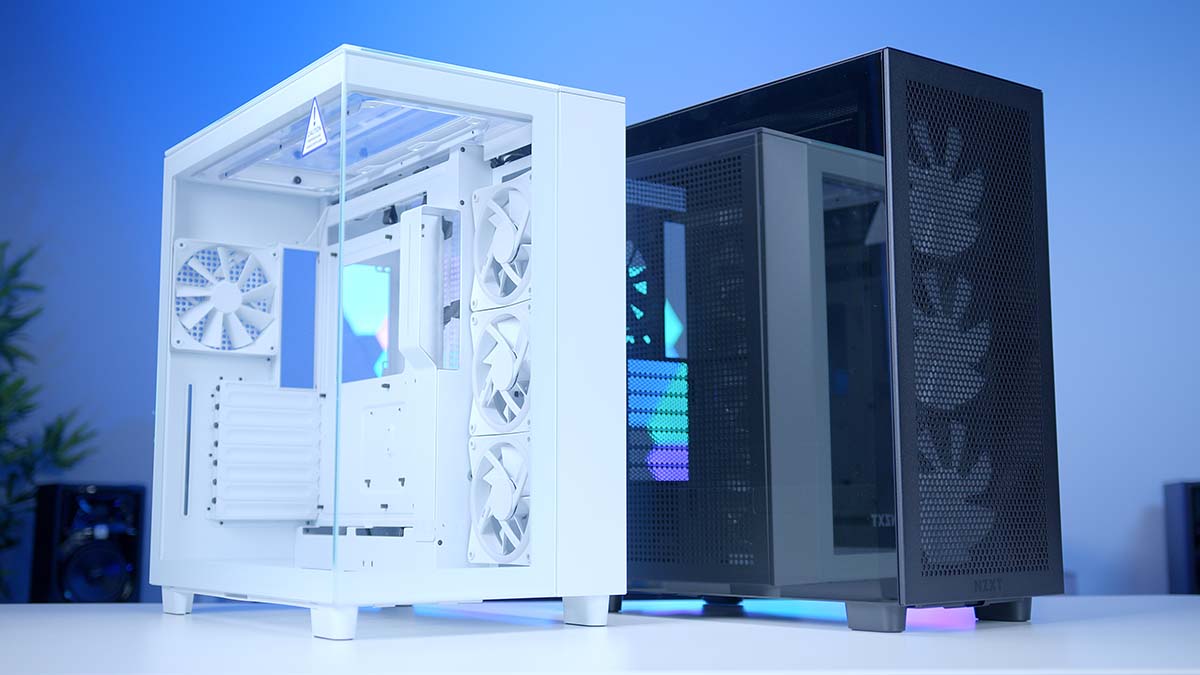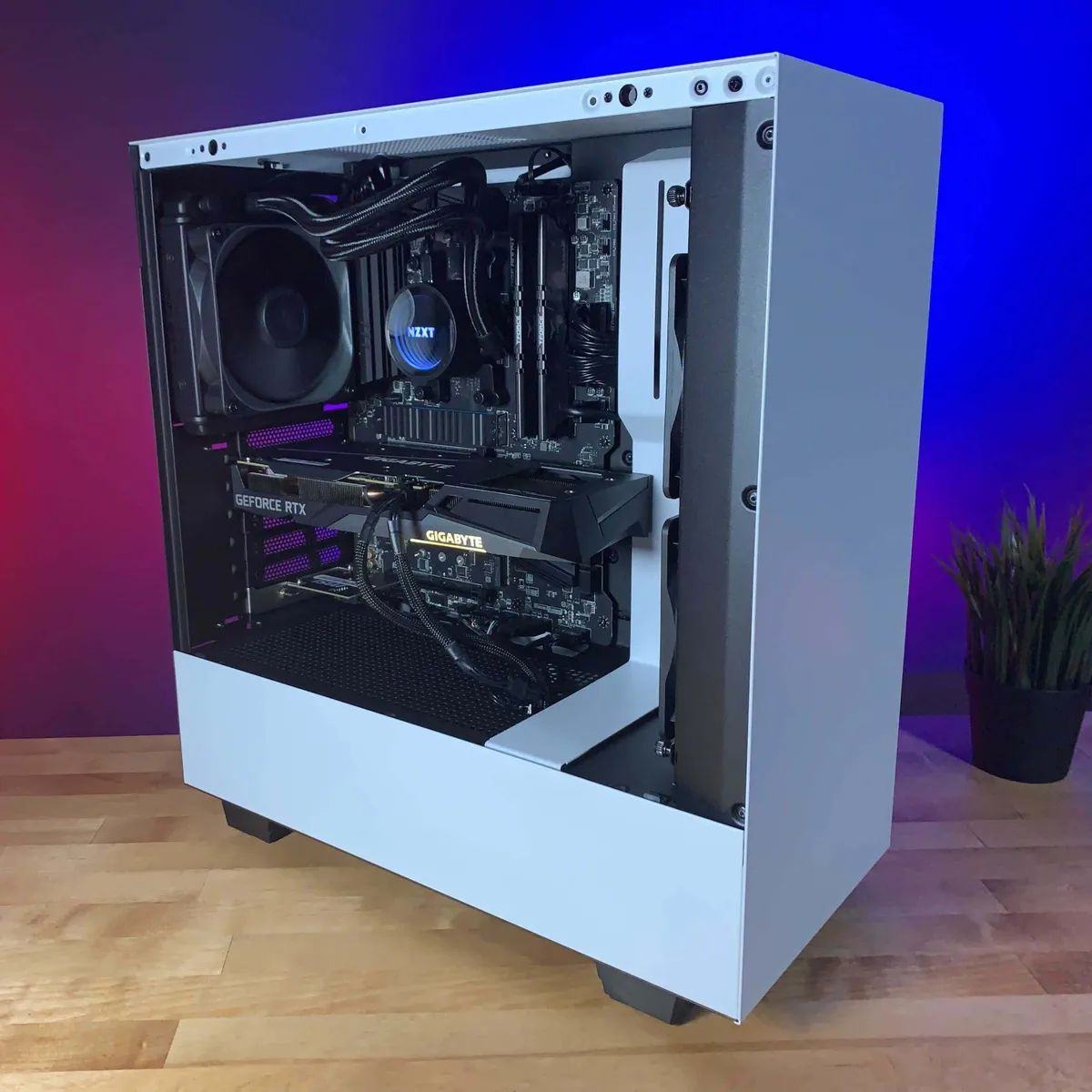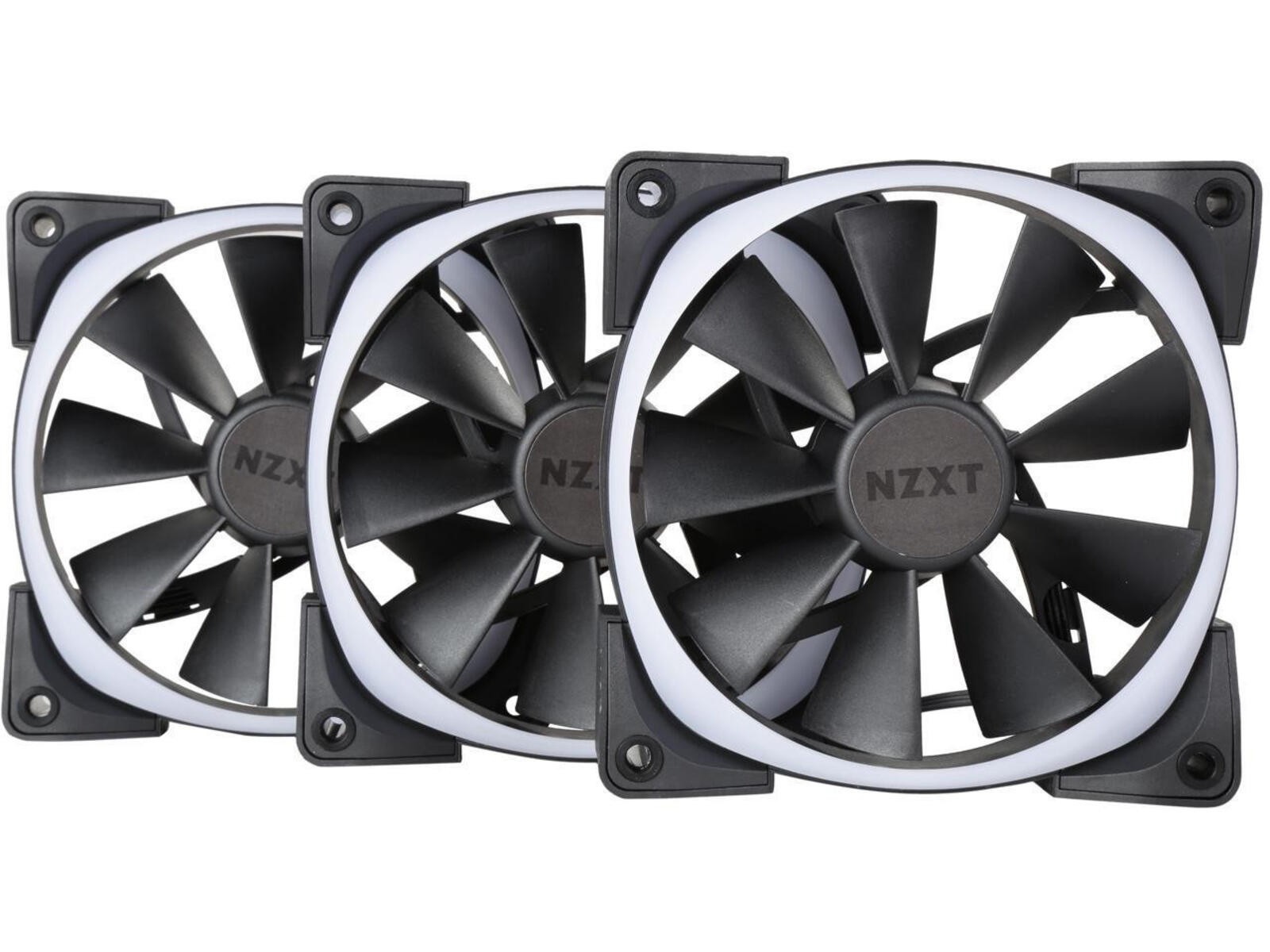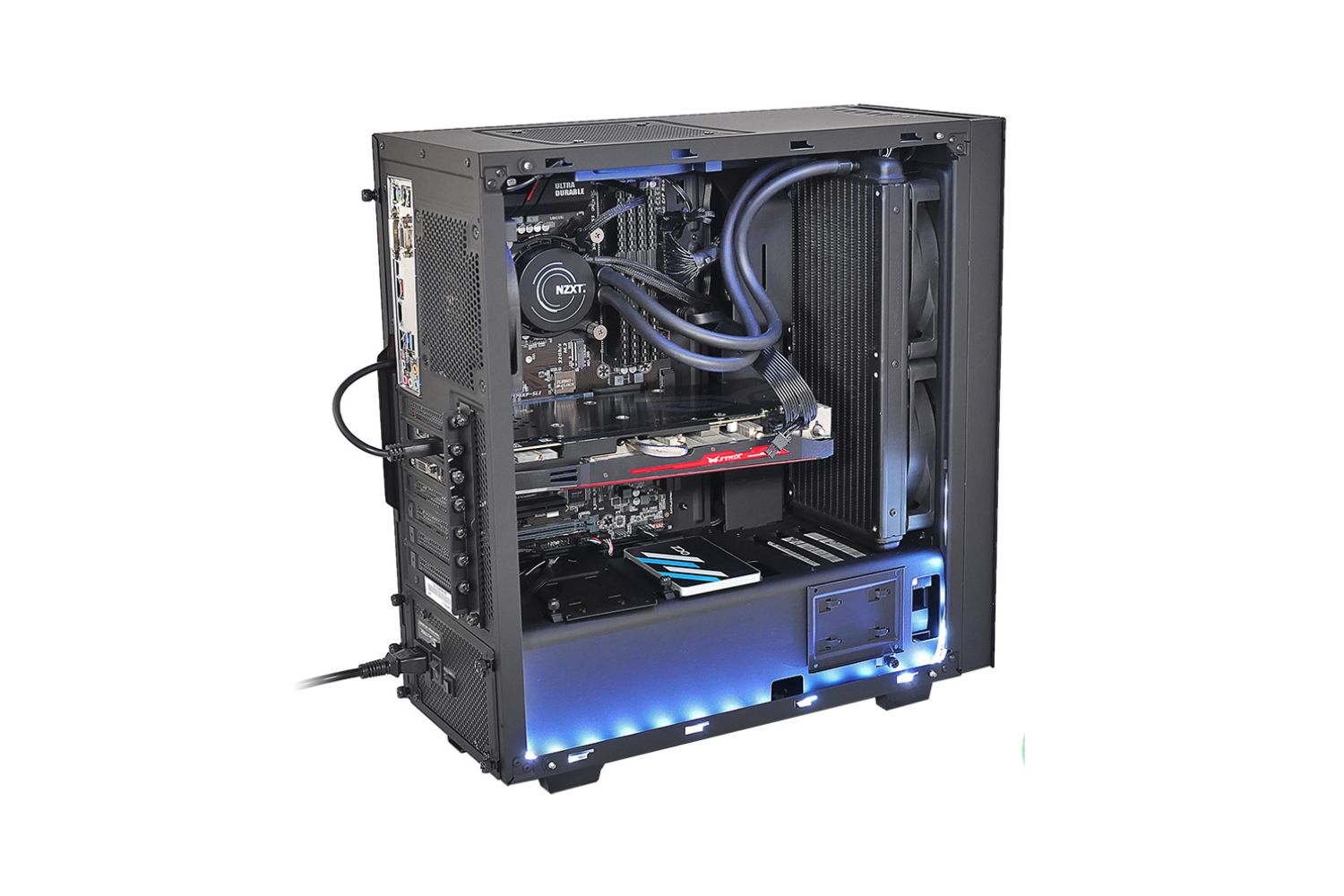Introduction
Welcome to our step-by-step guide on how to set up case fans in the NZXT H440 case. As an avid PC builder and enthusiast, it’s crucial to optimize airflow and cooling in your system to ensure optimal performance and longevity. The NZXT H440 is a popular choice among PC gamers and builders, known for its sleek design and excellent cable management options.
Proper case fan setup is essential for maintaining low temperatures and preventing thermal throttling of your components. Effective cooling can prolong the lifespan of your hardware and improve overall system stability during intense gaming sessions or demanding tasks.
In this guide, we will walk you through the process of selecting the appropriate fans for your system, identifying the fan mounting spots in the H440 case, and installing the fans in various locations. We’ll also provide tips on managing and connecting fan cables, as well as testing and adjusting fan speeds for optimal performance.
Whether you’re a seasoned PC builder or a newbie, this guide will help you get the most out of your NZXT H440 case fan setup. So, let’s dive in and give your system the cooling it deserves!
Understanding the NZXT H440 Case Fan Setup
Before we delve into the installation process, let’s take a moment to understand the NZXT H440 case fan setup. The H440 case comes with pre-installed fans, but it also offers various mounting spots for additional fans to enhance airflow and cooling performance.
The NZXT H440 supports up to six 120mm fans or four 140mm fans. It features fan mounting locations at the front, top, and rear of the case. The front panel supports three 120mm or two 140mm fans, the top panel supports two 120mm or two 140mm fans, and the rear panel supports one 120mm or one 140mm fan.
It’s essential to consider the airflow direction when installing case fans. The front panel fans should intake cool air into the case, while the top and rear fans should exhaust hot air out of the case. This setup ensures a steady airflow and prevents the accumulation of hot air inside the case.
Additionally, the NZXT H440 features a fan hub that allows you to connect multiple fans to a single motherboard fan header. The hub simplifies cable management, reduces clutter, and provides centralized control over fan speeds.
Understanding the fan setup options in the NZXT H440 case will help you make informed decisions when choosing fan configurations based on your system’s requirements, cooling targets, and noise preferences. With the right fan setup, you can strike a balance between optimum cooling performance and a quiet computing experience.
Step 1: Choosing the Right Fans for Your System
When it comes to selecting fans for your NZXT H440 case, there are a few factors to consider. The right fans can significantly impact your system’s cooling performance and noise levels. Here are some key points to keep in mind:
1. Size: The NZXT H440 supports both 120mm and 140mm fans. Consider the available fan mounting locations and choose the appropriate size that fits seamlessly into your case.
2. Airflow and Static Pressure: Fans are typically categorized into two types: airflow fans and static pressure fans. Airflow fans are designed to move large volumes of air, while static pressure fans are optimized for pushing air through restricted spaces like radiator fins or dense heatsinks. Assess your cooling requirements and choose fans accordingly.
3. Noise Levels: Fans generate noise, and excessive noise can be bothersome during intense gaming sessions or while working in a quiet environment. Look for fans with low noise ratings, typically expressed in decibels (dB), to strike a balance between cooling performance and noise output.
4. Fan Speed: Fan speed is measured in revolutions per minute (RPM). Higher RPM fans tend to provide better airflow but can be noisier. Consider the desired airflow and noise levels and choose fans with appropriate RPM ranges.
5. PWM or DC Fans: The NZXT H440 supports both PWM (Pulse Width Modulation) and DC (Direct Current) fans. PWM fans allow for precise control of fan speed through the motherboard, while DC fans operate at a fixed speed. Depending on your preference and motherboard capabilities, choose the type of fan that suits your needs.
Remember to check the compatibility of the fans with your motherboard and ensure that you have enough available fan headers or fan splitters for the installation. Consider budget constraints, brand reputation, and customer reviews to make an informed decision.
By carefully selecting the right fans for your NZXT H440 case, you can achieve optimal cooling performance while keeping noise levels in check. The next step is to identify the fan mounting spots in the case, which we’ll cover in the next section.
Step 2: Identifying and Locating the Fan Mounting Spots
Once you have chosen the appropriate fans for your NZXT H440 case, the next step is to identify the fan mounting spots. The H440 case offers several locations where you can install additional fans to improve airflow and cooling. Here’s how to identify and locate these spots:
1. Front Panel: The front panel of the NZXT H440 supports either three 120mm fans or two 140mm fans. Look for the fan mounting slots or brackets located behind the front panel cover. Remove the cover to access the mounting spots. In some cases, you may need to remove drive bays or brackets to make space for the fans.
2. Top Panel: The top panel of the H440 case can accommodate two 120mm or two 140mm fans. Locate the fan mounting holes on the top of the case. The top panel may have a removable magnetic dust filter or a vented area specifically designed for fan installation.
3. Rear Panel: The rear panel of the NZXT H440 case supports either a 120mm or a 140mm fan. Look for the single fan mounting hole near the top of the rear panel. This spot is ideal for exhaust fans, as it helps expel hot air from the case.
Once you have identified the fan mounting spots, take a moment to plan your fan configuration. Consider the airflow direction and the overall cooling strategy. It’s advisable to have front fans as intakes to bring in cool air, top fans as exhausts to remove hot air, and a rear fan as an exhaust to assist in the airflow.
Remember that installing fans in all available spots is not always necessary. Assess your cooling requirements and choose the appropriate number of fans. More fans don’t always guarantee better cooling, as an imbalance in airflow or excessive fan noise can occur.
With the fan mounting spots identified, you’re ready to move on to the next step: installing fans at the front of the NZXT H440 case.
Step 3: Installing Fans at the Front of the Case
Installing fans at the front of your NZXT H440 case is an effective way to bring in fresh, cool air and improve overall airflow. Follow these steps to properly install front fans:
1. Prepare the fans: Ensure that you have the desired number of fans for the front panel. Depending on your preference and needs, you can install either three 120mm fans or two 140mm fans. Check if any additional screws or mounting brackets are provided with the fans.
2. Remove the front panel cover: Gently pull the front panel cover of the H440 case forward to detach it from the case. You may need to apply a bit of pressure, but be careful not to exert too much force. Set the cover aside for now.
3. Locate the fan mounting spots: Look for the fan mounting slots or brackets behind the front panel. These spots should align with the fan sizes you have chosen. Remember to remove any drive bays or brackets that may obstruct the installation process.
4. Install the fans: Line up the screw holes on the fans with the mounting spots. Insert the screws provided with the fans through the screw holes and tighten them snugly. Ensure that the fans are securely in place but be cautious not to over-tighten, as this can damage the fan or strip the mounting holes.
5. Connect the fan cables: Depending on your fans and motherboard, you may need to connect the fan cables to the appropriate fan headers on the motherboard. If you have a fan hub, connect the fan cables to the hub and then connect the hub to a motherboard fan header.
6. Reattach the front panel cover: Carefully align the front panel cover with the front of the case and gently push it back into place. Ensure that all the clips and tabs are securely fastened. Give it a little wiggle to check if it is properly attached.
7. Test the fans: Power on your PC and check if the front fans are spinning. Enter your motherboard’s BIOS or use software to monitor and adjust fan speeds if desired. Ensure that the fans are running smoothly without any abnormal vibrations or noises.
Installing fans at the front of your NZXT H440 case will help improve the intake of cool air, leading to better overall system cooling. With the front fans installed, it’s time to move on to the next step: installing fans at the top of the case.
Step 4: Installing Fans at the Top of the Case
Installing fans at the top of your NZXT H440 case is crucial for efficient heat dissipation and to create a balanced airflow within the system. Follow these steps to properly install top fans:
1. Prepare the fans: Determine the number and size of fans you want to install at the top of the case. The NZXT H440 supports either two 120mm or two 140mm fans at the top panel. Ensure you have the necessary screws or mounting brackets for installation.
2. Identify the fan mounting locations: Locate the fan mounting holes or brackets on the top panel of the H440 case. Check for a removable magnetic dust filter or a vented area specifically designed for fan installation. Ensure there are no obstructions or cables in the way.
3. Install the fans: Line up the screw holes on the fans with the mounting spots on the top panel. Insert the screws provided with the fans through the screw holes and tighten them securely. Be careful not to overtighten, as this can damage the fans or strip the mounting holes.
4. Connect the fan cables: Depending on your fans and motherboard, connect the fan cables to the appropriate fan headers on the motherboard. Alternatively, you can connect the fan cables to a fan hub if you have one installed. Ensure all connections are secure.
5. Test the fans: Power on your PC and check if the top fans are spinning. Enter your motherboard’s BIOS or use software to monitor and adjust fan speeds if desired. Ensure that the fans are running smoothly without any abnormal noises or vibrations.
Installing fans at the top of your NZXT H440 case allows for effective heat dissipation and helps in expelling hot air from the system. It’s important to maintain a balanced airflow, with front fans acting as intakes and top/rear fans serving as exhausts. With the top fans installed, we can now proceed to the next step: installing fans at the rear of the case.
Step 5: Installing Fans at the Rear of the Case
Installing a fan at the rear of your NZXT H440 case is essential for effective heat expulsion and creating a steady airflow. Follow these steps to properly install the rear fan:
1. Prepare the fan: Ensure that you have the appropriate size fan for the rear panel. The NZXT H440 case supports either a 120mm or a 140mm fan at the rear. Check if any additional screws or mounting brackets are provided with the fan.
2. Locate the fan mounting spot: Look for the single fan mounting hole at the top of the rear panel. This spot is specifically designed for the installation of a rear fan. Remove any obstacles or cables that may interfere with the installation process.
3. Install the fan: Line up the screw holes on the fan with the mounting spot on the rear panel. Insert the screws provided with the fan through the screw holes and tighten them securely. Be cautious not to overtighten, as it can damage the fan or strip the mounting hole.
4. Connect the fan cable: Depending on your motherboard and fan type, connect the fan cable to the appropriate fan header on the motherboard. Ensure the connection is secure.
5. Test the fan: Power on your PC and check if the rear fan is spinning. Enter your motherboard’s BIOS or use software to monitor and adjust the fan speed if desired. Make sure the fan is running smoothly without any abnormal noises or vibrations.
Installing a fan at the rear of your NZXT H440 case helps in drawing out hot air from the system, maintaining steady airflow, and preventing heat buildup. With the rear fan installed, you have completed the primary fan installation process.
Now, before moving on to cable management and controlling fan speeds, let’s briefly discuss the importance of maintaining proper cable routing to optimize airflow and aesthetics.
Step 6: Managing and Connecting Fan Cables
Managing and connecting fan cables is an important step in setting up your NZXT H440 case fans. Proper cable management not only improves airflow but also enhances the overall aesthetics of your system. Follow these steps to effectively manage and connect fan cables:
1. Plan cable routing: Before connecting any cables, take a moment to plan the routing of your fan cables. Consider the length of the cables and the locations of the fan headers or fan hub. Aim for clean cable runs that avoid obstructing airflow or interfering with other components.
2. Use cable ties or Velcro straps: Secure your fan cables using cable ties or Velcro straps. Bundle the cables together to avoid clutter and make them easier to manage. Be sure not to overtighten the ties or straps, as this can damage the cables or restrict airflow.
3. Route cables behind the motherboard tray: The NZXT H440 offers ample space behind the motherboard tray for cable management. Route your fan cables behind the tray to keep them out of sight and maintain a clean interior look. Utilize cable routing holes or grommets to guide the cables neatly.
4. Connect fans to the motherboard: Depending on the fan type and your motherboard, connect the fan cables to the appropriate fan headers. Ensure you connect them according to your desired fan configuration and airflow direction. If you’re using a fan hub, connect the fan cables to the hub and then connect the hub to a motherboard fan header.
5. Avoid cable interference: Be mindful of the placement of fan cables to avoid any interference with CPU coolers, graphics cards, or other components. Ensure that the cables do not obstruct the movement of fans or impede the opening or closing of the side panel.
6. Test the fan connections: Power on your PC and check if all the fans are functioning properly. Use motherboard BIOS or fan control software to adjust fan speeds if desired. Confirm that the fan cables are securely connected and there are no loose connections or cable tangling.
By effectively managing and connecting your fan cables, you improve the overall airflow in your NZXT H440 case while creating a visually appealing and tidy interior. Now, let’s move on to the final step of testing and adjusting fan speeds.
Step 7: Testing and Adjusting Fan Speeds
Testing and adjusting fan speeds is the final step in setting up your NZXT H440 case fans. This step ensures that your fans are operating optimally and provides an opportunity to fine-tune the cooling performance based on your preferences. Follow these steps to test and adjust fan speeds:
1. Access fan controls: Depending on your motherboard, you can access fan controls in the BIOS or through dedicated software provided by the motherboard manufacturer. Check your motherboard’s manual or manufacturer’s website for specific instructions on accessing fan controls.
2. Monitor fan speeds and temperatures: Use the BIOS or software to monitor fan speeds and CPU/GPU temperatures. Many motherboards offer real-time fan speed and temperature readings. Keep an eye on these readings to ensure that the fans are spinning at appropriate speeds and that temperatures are within acceptable limits.
3. Adjust fan curve settings: Fan curve settings determine how fan speeds respond to changes in temperature. Most modern motherboards allow you to set custom fan curves or choose from preset profiles. Experiment with different settings to find a balance between airflow and noise. Higher fan speeds provide more cooling power but can increase noise levels.
4. Stress test your system: Run intensive tasks or stress testing software to put your system under heavy load. This will help you assess whether the current fan speeds are sufficient for cooling your components effectively. Monitor the temperatures during the stress test and adjust the fan speeds if necessary.
5. Fine-tune as needed: Use the monitoring tools to identify any hotspots or areas that require additional cooling. Adjust the fan speeds accordingly to ensure adequate airflow to those areas. Pay attention to CPU and GPU temperatures, as these are typically the most critical components that require efficient cooling.
6. Listen for abnormalities: While testing and adjusting fan speeds, listen for any unusual noises, vibrations, or fan rattling. These could indicate an issue with the fans or improper installation. If you notice any abnormalities, double-check the fan installation or consider replacing the fans if necessary.
By testing and adjusting fan speeds, you can optimize the cooling performance of your NZXT H440 case. Finding the right balance between cooling and noise levels ensures a stable and comfortable computing experience. With the fans properly set up and adjusted, you can enjoy your system’s improved cooling capabilities.
Conclusion
Congratulations! You have successfully set up case fans in your NZXT H440 case, improving the airflow and cooling performance of your system. By following the steps outlined in this guide, you have taken important measures to ensure optimal temperatures and stability for your components.
Choosing the right fans for your system, identifying and locating the fan mounting spots, and properly installing the fans at the front, top, and rear of the case are key steps in maximizing airflow and heat dissipation. Furthermore, managing and connecting fan cables ensures a clean and clutter-free interior, minimizing interference with other components.
Testing and adjusting the fan speeds allow you to fine-tune the cooling performance based on your preferences and the requirements of your system. Monitoring temperatures and listening for any abnormalities will help you maintain an effective balance between cooling power and noise levels.
Remember, the NZXT H440 case offers flexibility in fan configuration, accommodating various fan sizes and providing options for both intake and exhaust. By understanding the fan setup possibilities and making informed choices, you can optimize the cooling capabilities of your system.
As you enjoy the benefits of better airflow and temperature control, be sure to keep an eye on your system’s overall performance and temperatures. Regularly clean and maintain your fans and filters to prevent dust buildup, which can negatively impact cooling efficiency.
We hope this guide has provided you with the knowledge and confidence to set up your case fans effectively in the NZXT H440 case. With optimized airflow and cooling, your system will be better equipped to handle demanding tasks and gaming sessions, while maintaining stability and longevity for your precious hardware.
Happy computing!







